FEATURE
accidEntS, pErSonal injury and law with atty. gEorgE alEjandro
CANDID PERSPECTIVES
tyrE nicholS; half Moon bay SuSpEct confESSES; corky lEE; and how you can SEE EMil aMok in nyc

OPEN FORUM
hawaii’S tax on MEdical SErvicES harMS hEalthcarE; it’S tiME to do SoMEthing about it!


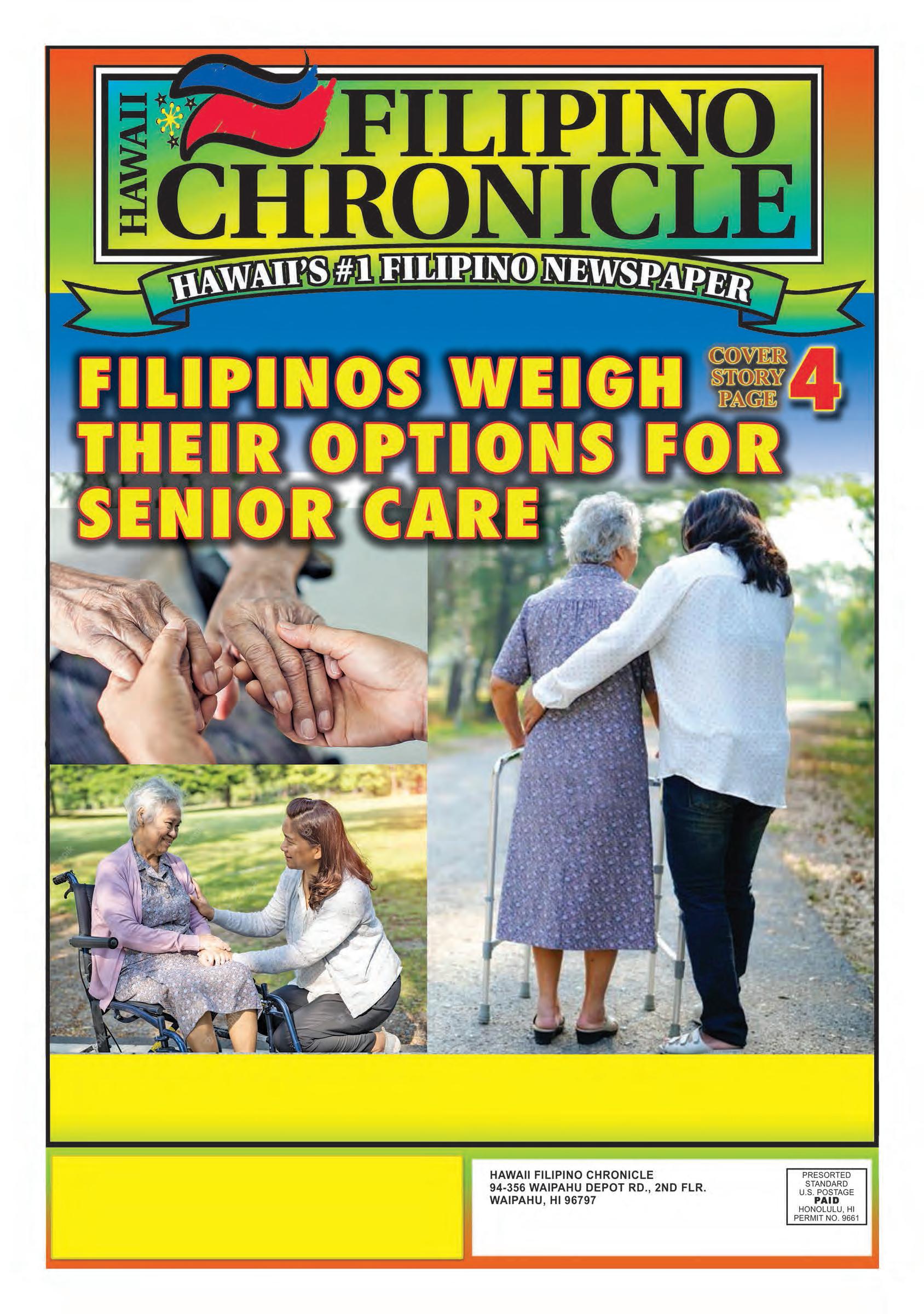
BOOK REVIEW
EndangErEd SplEndor: Manila’S architEctural hEritagE 1571-1960


FEBRUARY 4, 2023
Like Childcare, Senior Care Should Be in the Mix of Government Funding Priorities, Keep Funding Kupuna Caregivers Program
Both nationally and locally, there have been increased talks over providing government subsidies for childcare programs. Given the average cost of childcare in the U.S. at about $12 - $25.00 per hour, it’s financially difficult for lower waged income earners, particularly single-parents, to work and pay for childcare at the same time.
Similarly, what needs to be given more attention is possible government assistance for senior care that two-income household adults are also struggling with. The average cost for senior care is even higher than childcare. It is generally between $23$25.00 per hour.
The Senior Caregiving dilemma
In 2018, the state of Hawaii passed the Kupuna Caregivers Program (KCGP) that offers employed Hawaii residents who are also unpaid primary caregivers to receive some government assistance to care for their senior kupuna at home. The purpose of the program is to enable working adults to continue working and use that government benefit to go toward hiring a primary caregiver for their senior parent(s) or relative.
Besides adult care, KCGP also helps costs of services like transportation, home-delivered meals, homemaker services, personal care and respite care.
This is a much-needed program and helps many families in the state. But many say it alleviates only part of the expenses and only covers about three days of adult care.
Caring for senior parent(s) relative unpaid. Still, there are those who are unable to afford the high cost of senior care (even with the Kupuna Caregivers Program) and must give up their job to care for their senior loved ones, unpaid.
Shortage of professional help to care for seniors at home. Then there are those who might be able to afford paying for private professional care but due to the high demand for long-term care in the state, there is a shortage of certified nursing assistants and home health aides and other professionals to care for their senior parents.
A 2019 Healthcare Association of Hawaii survey found that healthcare providers had 417 open positions for certified nursing assistants, clinical assistants and nurse aides, 51 open positions for home health aides, 35 open positions for personal care assistants, and 463 open positions for registered nurses.
It’s important to emphasize that senior care is not just about finding quality care for our kupuna. But senior care affects the entire family from primary income earners in a household to their children.
Assisted Living Facilities (ALF) and Adult Residential Care Homes
For the highest income earners, Hawaii has two major types of senior care facilities: Assisted Living Facilities (ALF) and Adult Residential Care Homes.
ALF are usually a building complex with dwelling units or individual apartment style rooms where seniors who need little assistance are provided meals and 24 hours a day services. It’s independent living for seniors and great for seniors to be in a social environment.
Adult residential care home is very familiar to our Filipino community with many of us being in that industry of caring for
FROM THE PUBLISHER
February is the month of love and all of its splendor expressions. Most commonly, we associate romantic love in our celebration of Valentine’s Day. But we’re all aware love is boundless. One of the most beautiful love relationships we have is between parents and their children. It’s arguably the longest love relationship we have in our lifetime. At the tail end of it, grown children show their gratitude and reverse onto their parents the loving protection, nourishment and care they received.
In this issue’s cover story, associate editor Edwin Quinabo explores the issue of senior care, from its increasing need due to the massive aging population, the Filipino cultural expectation of senior care, and its high cost and challenges. Whether we are caring for our senior loved ones at home or in an assisted living facility (ALF), studies confirm what some of us already know from experience that stress and multiple-role tasking can be overwhelming during this period. The cover story zeros in on the A to Zs of ALFs: what can we expect in terms of financial obligation, the types of services commonly offered, as well as expectations of seniors while residing in an ALF. An ALF is great for some, and not ideal for others. But as seniors and soon-to-be seniors, it’s helpful to learn about our options that can empower us at our often most disempowering stage in life.
Also in this issue, we have a feature from HFC editorial assistant Jim Bea Sampanga on attorney George Alejandro, the only Filipino lawyer at Hawaii’s leading personal injury firm, Recovery Law Center. Besides his background, Alejandro provides valuable tips in the case you are involved in personal injury. Two very important ones: 1) get a police report, 2) document incident (if possible) at the time of injury using your cell phone.
HFC contributor Renelaine Bontol Pfister writes a news feature “Marissa Bañez’s Debut Book: Hope and Fortune.” We have an interesting Open Forum contributed by Keli‘i Akina “Hawaii’s Tax on Medical Services Harms Healthcare; It’s Time to Do Something About It!”
HFC columnist Elpidio Estioko contributes “Diversity Drives Creativity, Innovation,” an article on a recent Civic Leadership Forum in the San Francisco Bay area. HFC columnist Emmanuel Tipon contributes “Adultery, Immigration, And an Ilocano Lawyer.”
The nation once again is gripped by a shocking incident of police brutality. HFC columnist Emil Guillermo writes about the killing of Tyre Nichols at the hands of five Memphis Police officers. Our international columnist Seneca Moraleda-Puguan contributes “Protect the OFWs.” We have a fascinating piece by HFC contributor Rose Churma “ENDANGERED SPLENDOR: Manila’s Architectural Heritage 1571-1960,” and other articles and news we hope you’ll enjoy.
Lastly, I’d like to wish all of you a Happy Valentine’s Day!
Thank you for supporting the Hawaii Filipino Chronicle. Until next issue, Aloha and Mabuhay!

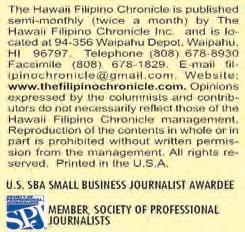
seniors. An adult residential care home is as its name, a home in a residential district that provides care for seniors 24 hours a day. An adult residential care home usually has between 1-5 seniors, and care ranges from assisting those who are very independent to those needing major assistance.
Both types of senior care facilities/homes are even more costly than hiring a primary care professional to watch over a senior parent.
Both senior care facilities/homes are usually options for seniors requiring some level of monitoring like a senior suffering from Alzheimer or senior needing help with eating and bathing. Those in the senior care industry refer to this as seniors with
Publisher & Executive Editor
Charlie Y. Sonido, M.D.
Publisher & Managing Editor
Chona A. Montesines-Sonido
Associate Editors
Edwin QuinaboDennis Galolo
Contributing Editor
Belinda Aquino, Ph.D.

Design
Junggoi Peralta
Photography
Tim Llena
Administrative Assistant
Lilia Capalad
Editorial & Production Assistant
Jim Bea Sampaga
Columnists
Carlota Hufana Ader
Elpidio R. Estioko
Perry Diaz
Emil Guillermo
Melissa Martin, Ph.D.
Seneca Moraleda-Puguan
J.P. Orias
Pacita Saludes
Reuben S. Seguritan, Esq.
Charlie Sonido, M.D.
Emmanuel S. Tipon, Esq.
Contributing Writers
Clement Bautista
Edna Bautista, Ed.D.
Teresita Bernales, Ed.D.
Sheryll Bonilla, Esq.
Rose Churma
Serafin Colmenares Jr., Ph.D.
Linda Dela Cruz
Carolyn Weygan-Hildebrand
Amelia Jacang, M.D.
Caroline Julian
Raymond Ll. Liongson, Ph.D.
Federico Magdalena, Ph.D.
Matthew Mettias
Maita Milallos
Paul Melvin Palalay, M.D.

Renelaine Bontol-Pfister
Seneca Moraleda-Puguan
Mark Lester Ranchez
Jay Valdez, Psy.D.
Glenn Wakai
Amado Yoro
Philippine Correspondent:
Greg Garcia
Neighbor Island Correspondents:
Big Island (Hilo and Kona)
Grace LarsonDitas Udani
Kauai
Millicent Wellington
Maui
Christine Sabado
Big Island Distributors
Grace LarsonDitas Udani
Kauai Distributors
Amylou Aguinaldo
Nestor Aguinaldo
Maui Distributors
Cecille PirosRey Piros
Molokai Distributor
Maria Watanabe
Oahu Distributors
Yoshimasa Kaneko
Pamela Gonsalves
Shalimar / Jonathan Pagulayan
Advertising / Marketing Director
Chona A. Montesines-Sonido
Account Executives
Carlota Hufana Ader
JP Orias
2 HAWAII FILIPINO CHRONICLE FEBRUARY 4, 2023 EDITORIAL
(continue on page 3)
Are We Really in Step with Biden on His Handling of Ukraine’s Liberation – We Should Be Asking Ourselves
Humanity has never come so close to destroying the world, according to the Bulletin of the Atomic Scientists that is behind the metaphorical Doomsday Clock, which attempts to gauge how close humanity is to the end of existence as we know it.
The Bulletin is comprised of esteemed scientists and currently 11 Nobel Prize laureates. Over time in its 75 years of existence scientists like Albert Einstein, J. Robert Oppenheimer and other Manhattan Project alumni have been a part of the organization that was founded originally to measure nuclear threats. But since 2007, it has included other threats to the world in its calculation.
Each January the Bulletin gives a report on the status of the world represented in the Doomsday Clock and 2023 was greeted with a startling movement of 10 seconds forward to 90 seconds until midnight (midnight represents the moment at which the Earth would be uninhabitable for humanity).
Some years the Bulletin will turn back the clock, other years it remains the same. In 2020 due to the threat of COVID-19, the clock moved to an unprecedented two-minute warning and stayed there through 2022 due to Russia’s invasion of Ukraine.
In 2022, the bulletin an-
(Like Childcare....from page 2)
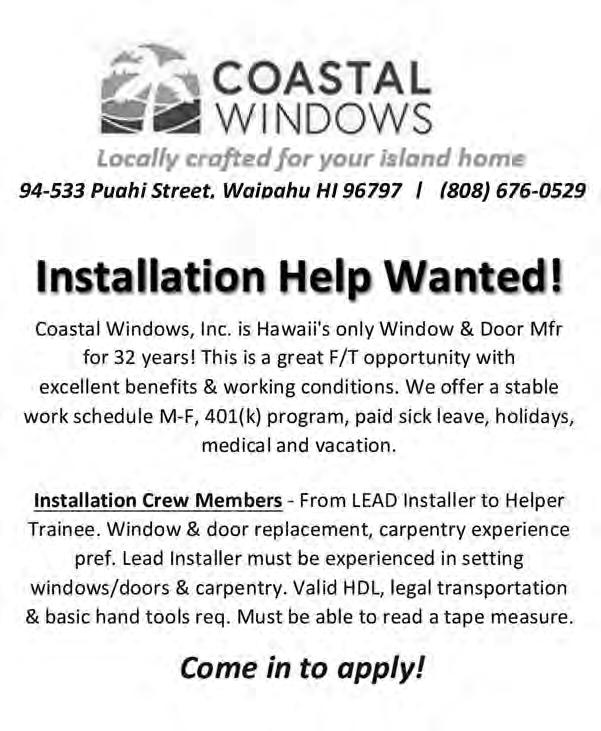
“self-care difficulty,” which is defined as having a physical or mental health condition for at least six months that makes it difficult to care of your personal needs.
The greater the need, usually the costlier it gets for the family.
Typically, seniors at ALFs have several children who tend to be higher income earners (and busy with careers) who all contribute to their parents’ care and/or these seniors have sufficiently prepared for their own retirement and pay for their stay at ALFs with their own income. The same holds true for adult residential care homes.
Ohana, multigenerational
nounced, “the world has entered the realm of a two-minute warning, a period when dangerous high and a margin for error is low. It’s a time that requires newfound vigilance and focus from leaders and citizens alike.”
The Bulletin attributes the reasons for the 10 seconds dial up for 2023 to biological threats like COVID-19, the worsening climate crisis, and the escalated risks of nuclear war over Ukraine.
Rachel Bronson, president and CEO of the Bulletin, said at this year’s clock historic unveiling. “It’s a decision our experts do not take lightly. The US government, its NATO allies and Ukraine have a multitude of channels for dialogue; we urge leaders to explore all of them to their fullest ability to turn back the Clock.”
As part of the Bulletin’s analysis, Bronson said, they ask two questions: 1) Is humanity safer or at greater risk this year compared to last year? and 2) Is humanity safer or at greater risk this year compared to the more than 75 years the Bulletin has been asking the question?
Stimulates critical thinking
Clearly the doomsday clock – even as those behind it are mostly scientists – is not meant to be scientific methodology in the strict sense. In other words, there is no real way to measure how close we are to
lifestyle
If at all possible, most Hawaii seniors would rather stay at their own homes for as long as possible. Culturally, for Asians and Pacific Islander families, multigenerational dwellings make this possible for seniors. This set up provides multiple incomes and the possibility is higher for at least one adult to look over the family kupuna.
Prepare for retirement
With so many urgent needs facing our state, it’s difficult to prioritize all of our populations’ needs. Hawaii at least has a program like the Kupuna Caregivers Program – something that’s very unique and unavailable for most senior Americans living
self-annihilation.
Rather the purpose ultimately is to encourage public engagement, to get people talking about serious threats in the world. And for a non-profit, non-political (at least not in the obvious classic mold) source to lay out these threats on a table for the world to assess, there is a high level of attention given to the Bulletin, and arguably greater credibility than if a bunch of editorial boards from distinguished newspapers in the world came together annually to promote an agenda with full consensus.
On Russia’s nuclear threats
The most pressing danger to our existence at the moment is the escalated war in Ukraine. Russian President Vladimir Putin said, “Regarding the threat of nuclear war. This threat is growing, and there is no point in denying it.” Putin said that Russia considers nuclear weapons as a means of defense and that its strategy is built around a “counter-strike” -- if Russia is attacked, it strikes back.
In 2018, the U.S. under President Donald Trump withdrew from the Intermediate-range Nuclear Forces (INF) Treaty, which the US and Russia had originally agreed to in 1987.
The INF was a significant nuclear arms control treaty. It banned all of the two nations’ land-based ballistic missiles,
in other states.
Given the high cost of living in our state and the diminishing retirement benefits companies are offering today, it’s easier said than done to advise Hawaii residents to prepare for retirement, to save as much money as possible to assist them in their golden years.
But we can try to do our best in putting money aside. We can continue our cultural Ohana multigenerational living. Seniors can also purchase long-term care insurance. Lawmakers should remain dedicated to funding the Kupuna Caregivers Program, and if possible, look to other means of assisting our seniors and families.
cruise missiles, and missile launchers. The treaty did not apply to air- or sea-launched missiles. By May 1991, the nations had eliminated 2,692 missiles, followed by 10 years of on-site verification inspections.
The U.S. exited the treaty because China (not included in that treaty) was seen to be a growing military threat. And the U.S. wanted to be freed from the INF to maintain military security.
On April 20, 2022, Russia carried out its first test launch of the RS-28 Sarmat, a new longrange intercontinental ballistic missile (ICBM). Putin said the new missile could defeat any missile defenses, and that it should cause countries threatening Russia to “think twice”.
On April 24, 2022, in response to U.S. secretary of state Antony Blinken’s meeting with Zelenskyy in Kyiv on 23 April, Russian foreign minister Sergey Lavrov stated that further support of Ukraine could cause tensions which could potentially lead to a World War III scenario involving Russia’s full arsenal of weapons.
On January 22, 2023, Vyacheslav Volodin, the speaker of the Duma, wrote on Telegram that “If Washington and NATO countries supply weapons that will be used to strike civilian cities and attempt to seize our territories, as they threaten, this will lead to retaliatory measures
using more powerful weapons.”
And most recently, the U.S. and Germany announced that they would be sending tanks to Ukraine. Previously, tanks (like aircrafts) were considered too escalatory, and the weapons provided to date have been mostly defensive missiles (Javelins, Stingers) and drones, and on offense heavy artillery (Howitzers) machine guns, grenade launchers and various rifles.
Since there hasn’t been much news on this development of NATO sending tanks to aid Ukraine, the Bulletin in its Doomsday announcement comes at a time that should stimulate Americans into thinking toward what end do we want our government involved in liberating Ukraine, and at what cost.
There has been little to no pushback on President Joe Biden’s agenda in Ukraine. In politics, silence is always interpreted as a tacit agreement. But are we really in locked agreement as a country in the current course the U.S. is taking in Ukraine. This is a question we all should be asking ourselves. There must be more dialogue on this subject since corporate media no longer is covering the war and potential risks as they used to.
The Bulletin deserves some credit in reigniting conversations on this issue.
FEBRUARY 4, 2023 HAWAII FILIPINO CHRONICLE 3 EDITORIAL
Filipinos Caring for Their Elderly: Home Care or Assisted Living Facility? Having Options Is Empowering
By Edwin Quinabo
Senior advocacy groups have been warning of a silver tsunami for decades and a need to prepare for the rising demand in health care and assisted senior living facilities that the massive Baby Boomer and late Baby Boomer generations will require.
That time has come.
According to the U.S. Census Bureau, more than 56 million adults ages 65 and older live in the United States, accounting for about 16.9% of the nation’s population.
In Hawaii, those 65 and over make up about 20% of the state’s population. From 2020 to 2030, the state Department of Business and Economic Development and Tourism estimates this demographic will grow from 19.1% to 22.5%. About 37% of Hawaii’s residents are 50 and older, or just over a half-million people.
Statista 2023 further breaks down Hawaii’s senior demographic as 65 to 74, 11.3%; 75 to 84, 5.9%; and 85 and over, 2.5%. The general rule of thumb is the older a senior is, the need increases for assisted senior care. Statista also provides a near retirement age breakdown: 55 to 59, 6.1%; and 60 to 64, 6.4%.
Statistics suggest that demand for assisted living facilities will only rise especially since Hawaii has the highest life expectancy age in the nation at 81.3. But health care experts say the ratio of potential caregivers to the elderly needing
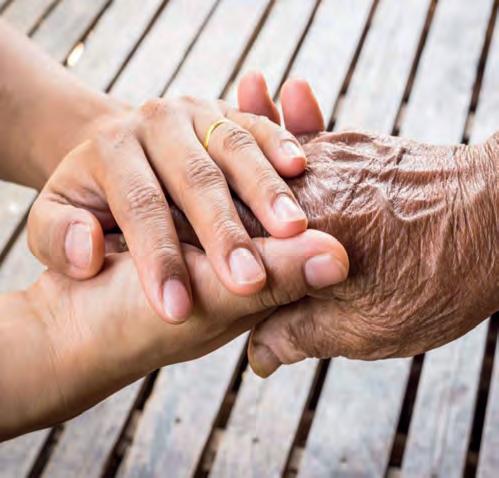
Cultural stigma of ALF
When it was explained to Rico of their new living arrangement in an ALF, Estrella said he understood what that meant and did not want to cooperate with their children’s suggestion. “He was upset, angry. He felt ashamed. Because in our Filipino culture, when old folks are not able to care for themselves, there is this expectation that they would be cared for and live with their children.
“For our generation, go-
care is projected to decline.
Estrella Avelino, 82, and her husband Rico, 85, live in an assisted living facility (ALF). They have two children who live in California, have a house in Foster Village, Oahu, but rent it out. Their children convinced them to move into an ALF after Rico’s Alzheimer worsened and Estrella couldn’t fully care for Rico.
While Rico requires more attention (what some in the senior care industry refer to as having “self-care difficulty”), Estrella is healthy and is fairly independent as much as a woman of her age can be.
Because they share a private room (often called apartment unit) together and Estrella is able to help look over her husband, this has saved the couple some money because a typical Alzheimer patient alone would require additional care from ALF staff. But a private room is much costlier.
Estrella describes the room as spacious. They have their own bathroom, sitting area with TV, mini kitchen and a large bed they share. They have 24-hour assistance if needed and staff help could be accessed by a call system. They have three meals a day that are available in the cafeteria.
“It’s like living in a hotel. I love it,” Estrella said. “It reminds me of when we used to go to Las Vegas when we were younger. It would be nice if they had slot machines, even if it were only for fun,” she said jokingly.
“But the atmosphere is good because we see lots of other people. It’s not as lone-
ing to an assisted care home, there is judgement that your kids don’t love you enough or have enough respect to care for you. That is what Rico was thinking but couldn’t express himself too well. This is how it has always been done in the Philippines. So, we expected the same for us” Estrella said. “There is shame. And for our children, there is guilt, too. But we are here, and we want to make the best of it.” She said there are still people who do not know that they are in an
ALF. And that they’d like to keep it that way.
Estrella said the social part of having people around is good for now. “But I’m not sure if my husband were to pass away before me, I would have the same outlook. I think even though there are more people, I would probably feel lonely. I’m not sure.” (Editor’s note: only their real names are withheld from this article.)
High cost of Assisted Living Facility
ly here than just being alone in the house. You know people our age, we hardly have visitors. Because all of the people our age have either passed away or are too old to drive and get around,” Estrella explained.
Rico doesn’t have much to say. “Sometimes he forgets that he already ate or that he was bathed, I feel secure that we are here because I used to worry when we were alone at the house that Rico would walk away and not remember how to get back home,” Estrella said.
The Avelinos are typical of ALF residents. They enjoy the social environment and feel safe. But people in the business of senior care also say residents typically express a positive attitude, but often find it difficult to accept that they are not healthy enough to be on their own and be fully independent.
But these are the residents who are mentally healthy enough to process their situation. There are others who express or say very little, senior care workers say.
While the Avelinos have mixed feelings about being in an ALF – happy to be in a social environment and feel safe, but also feeling ashamed to be there because of cultural stigma – they are considered by many to be among the lucky ones their age who can afford quality senior care.
According to AssistedLiving.org that conducted extensive research on 22 ALFs in Hawaii, while long-term care costs in the state vary significantly among the islands, Ha-
waii’s monthly assisted cost is $5,500, which is $1,500 more than the national average. That cost does not include personal items such as clothing, prescription drugs, doctor visits and personal hygiene items.
Estrella was shy about saying how much they are paying monthly. Her two children are professionals, she said, “they can afford it.”
The Avelinos’ private room to themselves costs extra, beyond the average $5,500.
4 HAWAII FILIPINO CHRONICLE FEBRUARY 4, 2023 COVER STORY
(continue on page 5)
(Filipinos Caring....from page 4)
The median price of a private room in an ALF exceeds $160,000 a year in Hawaii, according to GensWorth, a longterm care insurance company.
Each nonprivate room in an ALF must be shared with no more than four residents.
The Hawaii couple uses some of their rental money from their house mostly for personal items not provided by the ALF.
Medicare/Medicaid. To supplement seniors’ retirement savings and benefits, financial experts recommend that seniors purchase long-term insurance because Medicare generally will assist with short-term stays in nursing facilities or require that seniors be homebound (unable to physically leave one’s home due to poor health) before providing extra financial assistance.
Medicaid will pay for longterm care at ALFs, but seniors must meet income requirements to qualify. Hawaii’s entitlement program for seniors is called Med Quest Integration. It is funded jointly by the state of Hawaii and federal governments.
What is an Assisted Living Facility?
There are 42 ALFs in Hawaii. The State of Hawaii defines an Assisted Living Facility as a combination of housing, healthcare services and personalized supportive services.
An ALF is different from the other popular senior care assisted living that many Filipinos have their business in, the adult residential care home.
ALFs usually is in a building complex with multiple dwelling units. Many ALF residents have independent lifestyles even as they receive assisted living services. Meals are provided and there are multiple staff.
Adult residential care homes are as the name states, privately owned homes in residential districts with typically one to three staff staggered within a 24-hour period. Residents typically are no more than five in a home.
AssistedLiving.org lists typical services at ALFs:
• Three meals a day served in a common dining area
• Housekeeping services
• Transportation
• Assistance with the activities of daily living
• Medication management
• Access to medical services
• 24-hour staffing and security
• Personal laundry service
• Exercise, social and recreational activities
ALFs’ Requirements and Service Plans
A service plan is a contract between the ALF resident and facility that outlines assistance needs, medication schedules, evacuation plans, costs, residents’ rights and responsibilities, and services offered such as housekeeping, personal hygiene care, and health monitoring.
Before a service plan can be drawn up, a new resident must undergo a comprehensive medical examination that will determine the resident’s medical needs.
ALFs have different admission requirements. Some will accept residents requiring complete assistance, but these facilities usually admit fewer residents. Some will only accept residents that need minor assistance. These ALFs tend to have more residents.
ALFs admission requirements are usually dependent on the number of staff and special equipment they have to assist seniors. Grounds for dismissal of a resident could include deteriorating health that the facility’s staff or equipment cannot accommodate.
Residents and their families must comb through the service plan carefully because there are often wide differences among
COVER STORY
eligibility, requirements and costs. Senior advocacy groups recommend seniors and their families do research to find the most suitable ALF based on services needed and cost that matches their budget.
Lower price doesn’t necessarily mean better care, experts say, which is why going over reviews and ratings should be included in their research.
Nursing Homes
Nursing homes fall into a different category from ALFs and Adult residential care homes. Nursing homes are generally for seniors that require specialized care with mostly registered nursing staff. Hospice care (for terminally ill patients) falls under the nursing home category.
Realistic decision-making
Teresita Bernales, a senior, lives at home with her husband in Kailua. Like many seniors, she and her husband prefer to stay home as long as possible. “At the moment, I want to agein-place as long as I can. I will try to make a realistic decision as I advance in age, that there is a point in one’s life when I have to admit that I am having difficulty living independently. I will try to be objective in making the right choice, by deciding on what I need, finding a location that matches my needs and evaluating the locations using multiple resources. Throughout the journey for my new home that will keep me and my loved ones happy and healthy in the present and years to come. I will seek assisted living arrangements for my
“We probably will not take that route [utilizing an assisted care facility] because my mom is aware of what’s going on, her surrounding, and only trusts me to take care of her. I know my mom would be frightened to be alone and away from me or my family given her health condition. I have to endure the stress, but I can do it, because I see in her eyes how much she needs me. Some people can handle an ACF or care home, that is a win-win situation for both the senior and family. But it’s not for everyone like my mom is an example.”
Lita
husband and I when needed,” she said.
Uncertainty, fear of unknown
Not only is it stressful for family caretakers, but seniors also express deep reservations just thinking about the possibility of moving to an assisted care facility in their future. “Moving comes with both physical and emotional stress because you leave behind a family home full of memories and the comfort and safety of your neighborhood environment. The fear of the unknown is another factor to be considered,” Bernales said.
She mentions the benefits of aging in place like the comfort of home, family, pets, social engagement in the community, cost effectiveness, and the ability to maintain dignity and independence.
Bernales advocates for preparation. “It is better to prepare early and be ready for a change of lifestyle when the time comes with the help of your loved ones. Fortunately,
experienced in-home caregivers are available to optimize the benefits of aging in place.”

Hawaii’s culture of caring for seniors at home
Studies show that seniors who age at home tend to have better health. Asian and Pacific Islander acceptance of multi-generational households alleviates some of the demand for ALFs.
But the financial burdens of senior care don’t escape these households that often require a working adult to give up work to care for a kupuna.
AARP Hawaii estimates there are 157,000 unpaid family caregivers providing about 131 million hours of care a year in Hawaii at a value of $2.1 billion.
For two-income households (not multi-generational), the financial burden is more acute, which has led the state in 2018 to pass the Kupuna Caregivers Program (KCGP) that offers employed Hawaii resi-
(continue on page 6)
FEBRUARY 4, 2023 HAWAII FILIPINO CHRONICLE 5
–
Pulanco caregiver to her mom
By Emil Guillermo
After this week, there will be just one civil rights story in America—the video of the beating of Tyre Nichols at the hands of five Memphis Police officers, all of whom have been fired and charged this week with felonies, including second-degree murder and kidnapping.
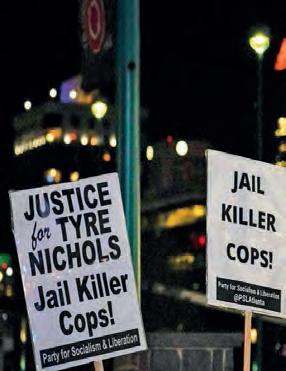
Those who’ve seen the video say Nichols will be a new generation’s Rodney King, the African American man brutally beaten by the Los Angeles Police March 3, 1991.
The difference in Memphis is that most all the key players in this case are Black. The police officers, the police chief, even Nichols.
That means racial animus shouldn’t be a factor in this case. This seems to be a pure case of police brutality where the only relevant color is blue.
How did it happen that the supposed “good guys,” five of them, went over the edge of the thin blue line to be accused of murdering an innocent man?
Nichols is said to have been beaten to death like a hu-
Tyre Nichols; Half Moon Bay Suspect Confesses; Corky Lee; and How You Can See Emil Amok in NYC
man “pinata.”
If the video is as ugly and repulsive as everyone says, the Blue Code will be tested. And exposed. Again.
Half Moon Bay, Monterey Park
The Nichols beating caught on video will push the California mass shootings off the front pages. But local news orgs are getting out new information about Chunli Zhao, 66, the man accused in the Half Moon Bay mass shooting that killed seven people.
On Jan. 26, Zhao told NBC News Bay Area he killed the seven people who died, though he thought he killed eight. The confession came in a jail house interview conducted by Janelle Wang, who spoke to Zhao in Mandarin, and got him to essentially confess to the shootings.
“I did ask him about killing seven people and shooting eight… and he admitted that he did do it,” Wang said in her report, adding that Zhao felt he had undergone years of being bullied and overworked. Zhao also believes he suffers from some sort of mental illness.
“He says… he was not in his right mind,” Wang said.
(COVER STORY: Filipinos Caring ....from page 5)

dents an opportunity to continue working and receive financial assistance from the state to go toward hiring senior care.
Employed women 55 and older is the demographic that commonly takes on the role of home caregiver to a parent(s) or relative, according to AARP Hawaii.
Besides feeling financially strained, home caregivers report high levels of stress over their responsibilities that most received no training for.
ALF is not right for some even if they could afford it
Lita Pulanco, 57, Moanalua, fits AARP’s demographic as those who most frequently take on the role of caregiver. Lita cares for her mother Reyna, 74, who needs help with hygiene
care from bathing to brushing her teeth. Lita must cook for her mother as well.
“It’s been getting increasingly difficult,” Lita says, “because my mom’s liver disease is worsening. She suffers from dehydration often and her muscles cramp up. I’ve been spending a lot of time lately massaging the parts of her body where cramping occurs.
“We are also going to the doctors more frequently and preparation to leave the house is additional stress. I need to change her. Load and unload the wheelchair. Just helping my mom go from the passenger’s seat to the wheelchair is nerve-wracking because I’m afraid she might slip from my arms and fall.”
Lita said her family has
people, and wounded nine. Investigators there are still searching for a motive, but with Tran dead, blame seems moot as the funerals begin and people struggle with grief.
“Emil Amok: Lost NPR Host Found Under St. Marks, and Other Stories…” is my one-hour show were I talk about the absurdities of life as an Asian American Filipino.
Zhao was charged on Jan. 25, with seven counts of murder, one count of attempted murder. I’m wondering if he had a court appointed attorney who was language competent. Surely, I would have kept Zhao away from any reporters.
I didn’t feel sympathy for him until I heard about the jail house interview.
I’ve done some jail house interviews myself, one a serial rapist/murder whom I testified against. But I know how a reporter’s good “get,” may get in the way of Zhao’s search for impartial justice.
We won’t have that problem in Monterey Park. The suspected killer, Huu Can Tran, 72, took his own life after the rampage on Jan. 21 at the Star Ballroom killed 11
talked about getting outside help or if ALF is a possibility in the future. But right now, her family decided that an ALF or adult residential care home for Reyna is not best for her.
“We probably will not take that route because my mom is aware of what’s going on, her surrounding, and only trusts me to take care of her. I know my mom would be frightened to be alone and away from me or my family given her health condition.
“I have to endure the stress, but I can do it, because I see in her eyes how much she needs me. Some people can handle an ALF or care home, that is a win-win situation for both the senior and family. But it’s not for everyone like my mom is an example,” Lita said.
I found myself staring at a loop on TikTok for minutes. It was a video of the first person identified as a victim, Mymy Nhan, 65, a regular at the Star Dance studio. Nothing I’ve seen in all the coverage quite captures the emotional loss of Monterey Park like watching Mymy on that TikTok loop, dancing endlessly.
Corky Lee, And My New York City Frigid Fringe Show
Jan. 27 is the day my old friend, the photographer Corky Lee, died of complications from COVID-19. He is the first and only person I know who died of COVID-19 specifically. He died before there was any vaccine.
About three years ago, we talked about trying to get me to do my one-man theater piece, “Emil Amok: The Amok Monologues” in New York. The pandemic killed that idea.
But now that people are out and about, I am venturing out of my closet in California and coming to a live audience.
Lita used to work in accounting at a top advertising firm in downtown Honolulu. She’s had no experience as a caregiver. Senior advocates say this is typical. When a parent suddenly is diagnosed with a terminal illness, the family member turned caregiver almost overnight is not prepared.
The caregiver needs to handle a dying parent’s finances, pay the bills, do all the errands, grocery shopping, cleaning, driving to doctors appointments, cooking, be a positive health cheerleader, be a spiritual and psychological counselor, be a nurse’s aide, be a pain management expert, administer medicine, and more.
On top of that, the family caregiver has to cope with the emotional stress of losing a
There’s the racist history that’s common to all Asians in America. I talk about my colonized father, and how I worked my up in media to being the first Asian American to host NPR’s “All Things Considered.” I also talk about Harvard/affirmative action, and I’m sure I’ll sneak in a Corky story.
It’s only a comedy because in all our stories there’s too much pain.
Come see the show at the New York City Frigid Fringe, and as my show title suggests it’s at the intimate Under St. Mark’s Theater in Manhattan, Feb. 16- Mar. 4. The show’s on at various times, so click on the link to get all the dates and show times. And even if you’re in Hawaii, each show will be streamed live.
Get tickets at this link: https://www.frigid.nyc/ event/6897:338/
EMIL GUILLERMO is a journalist and commentator. His talk show is on www.amok.com.
loved one.
Lita’s son and daughter have seen firsthand how their mother has cared for their grandmother Reyna. “If there is a silver lining in all the hardship I’m going through, at least I am setting an example for my children. I don’t have the fear of being in a care home like my mom. But if my children would want to care for me at home when that time comes when I’m practically disabled, I’d rather be at home,” Lita said.
She makes a final point that what seniors ultimately want in their golden years is the ability to have options. She said, “we all have different priorities and levels of comfort. What having options does is empower us when we are most powerless.”
6 HAWAII FILIPINO CHRONICLE FEBRUARY 4, 2023 CANDID PERSPECTIVES
By Atty. Emmanuel S. Tipon
hou shalt not commit adultery.”
-7th Commandment. “Thou shalt not covet thy neighbor’s wife.” - 10th Commandment.
Why is the Bible overly concerned with adultery? There are two commandments regarding it – the 7th and the 10th. There is only one commandment about killing which has more bloody consequences or stealing which has more serious financial and emotional consequences?
Because the sexually insecure old men who wrote the Bible were concerned that their young wives would be seduced by the young men in their tribe.
What is adultery?
The traditional meaning of adultery is: a man has sexual intercourse with a married woman. Nothing is said about the civil status of the man. Biblically it was assumed that the seducers of the young women who were married to old men were unmarried young men. If the young man was married, it was “double adultery.”
Is adultery limited to actual physical sexual intercourse? Can you visually commit adultery, meaning you did not have sexual intercourse but only imagined it?
Do you remember that there was a Presidential candidate named Jimmy Carter, a Democrat of course, who said “I’ve looked on many women with lust. I’ve committed adultery in my heart many times. God knows I will do this and forgives me.”
There was a picture showing him looking at the Statue of Liberty. What is sexually stimulating about the Statue of Liberty? Que horror! “Mababa ang kaligayahan.” (Easily pleased) I have seen the Stat-
WHAT’S UP, ATTORNEY?
Adultery, Immigration, And An Ilocano Lawyer
ute of Liberty. I was not sexually stimulated. Furthermore, the Statute of Liberty is not a married woman, stupid. Adultery can only be committed with a married woman.
These Democrats, susmariosep. They do not even know how to commit adultery.
How about when the woman is married but the marriage is declared void ab initio because it lacked one of the elements of a valid marriage such as being single at the time of the marriage?
Does the woman commit adultery if she has a sexual relationship with a man other than her husband (with a prior undissolved marriage) prior to the declaration of nullity of her marriage?

Adultery and immigration
The original Immigration and Nationality Act (Public Law 414, 66 Stat 172-73, June 27, 1952) provided that: “(f) No person shall be regarded as, or found to be, a person of good moral character who, during the period for which good moral character is required to be established, is, or wasXxx xxx xxx (2) one who during such period has committed adultery;
The statute does not require “conviction” but merely “commission.” Compare that with the provision on “murder” which states: “(8) who at any time has been convicted of the crime of murder.”
However, the current immigration law has eliminated “adultery” from the list of persons who shall not be regarded as a person of good moral character.
What is the effect? Is a person who commits adultery now a person of good moral character? The playboys who are fond of chasing beautiful married women are now singing “Alleluia.”
Immigration authorities are still trying to capture alien adulterers by saying that if the adulterous relationship
What can you say about this report that you committed adultery?
The French man explained that he was drinking tea at a cafe when a seductive woman approached him. They talked. The woman invited the lawyer to her pieda-terre. He went with her.
tended to destroy an existing marriage and there are no extenuating circumstances such alien should be denied citizenship.
There is an actual case about this reportedly involving an ineffective attorney (woman) who represented the alien and made the alien sign an affidavit admitting to committing adultery.
Why admit when nobody knew about it except the guy and the married woman?
Immigration authorities could also go after an alien who has been convicted of adultery by claiming that such person has been convicted of a crime involving moral turpitude and therefore ineligible for voluntary departure or cancellation of removal.
Alien targets of immigration authorities should get an excellent lawyer who knows how to fight them and win.
Three Lawyers, Including An Ilocano
Three lawyers were before the pearly gates of heaven seeking entry to a heavenly abode.
The first lawyer, an American, faced St. Peter who is said to be the guardian of the pearly gates. St. Peter said: Your rap sheet shows you have committed adultery
What sayeth?
The American lawyer replied: I demand my constitutional rights. I want to see the grand jury indictment. I want to confront my accuser. I demand my right to a 12-man jury trial.
St. Peter said: Your American constitutional rights do not apply here.
The second lawyer was a French man. St. Peter said:
be construed to mean only adultery with one’s neighbor.
But who is a neighbor? A next-door neighbor? A neighbor within the block? Or what? Penal laws should be strictly construed.
One thing led to another, and they landed in bed. They were having sexual intercourse when a man arrived. Hey, shouted the man, that is my wife you are on top of.
The lawyer continued doing what he was doing. The husband got a sharp knife and cut the man’s birdie. St. Peter asked: So what is your defense? The French lawyer said: I did not know she was married.
St. Peter said: But when her husband arrived and said that the woman was his wife, why did you not stop? Would you stop when you are about to reach the climax? “Don’t ask me,” riposted St. Peter, “I am not into those things”.
The third lawyer was an Ilocano whose last earthly abode was Honolulu but was born in Ilocos Norte. He was 100 years old but looked like 60, thanks to drinking goat’s milk morning and evening and playing with very young women whose youth he absorbed by the process of osmosis.
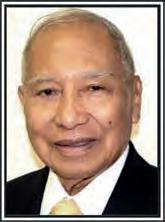
What do you say to these charges of adultery, asked St. Peter. The Ilocano lawyer replied: There is no exact definition of adultery. What is adultery to one might not be adultery to another. Adultery is in the eye of the beholder. Therefore, the term “adultery” is unconstitutionally void for vagueness.
Furthermore, the Bible has two commandments about adultery. One. Thou shalt not commit adultery. The second: Thou shalt not covet thy neighbor’s wife.
They should be read in pari materia (statutes on the same subject matter should be read together). Thus, the commandment against adultery should
The Bible is like a penal law. Therefore, adultery should be limited to adultery with a next-door neighbor. I did not commit adultery with a next-door neighbor.
Your arguments are great, attorney, said St. Peter, but you have not denied having romantic liaisons with a number of married women. How do you plead?
“No contest, ngarud,” replied the Ilocano lawyer.
Only one lawyer was admitted to heaven. Who do you think was the one?
The first one to call with the correct answer and the reasons on our radio show, The Tipon Report, on February 2, 2023, will be our dinner guest at Morton’s The Steakhouse in Honolulu.
ATTY. TIPON was a Fulbright and Smith-Mundt scholar to Yale Law School where he obtained a Master of Laws degree specializing in Constitutional Law. He has a Bachelor of Laws degree from the University of the Philippines. He is admitted to practice before the U.S. Supreme Court, New York, and the Philippines. He practices federal law, with emphasis on immigration law and appellate federal criminal defense. He was the Dean and a Professor of Law of the College of Law, Northwestern University, Philippines. He has written law books and legal articles for the world’s most prestigious legal publisher and w rites columns for newspapers. He wrote the best-seller “Winning by Knowing Your Election Laws.” Listen to The Tipon Report which he cohosts with his son Attorney Emmanuel “Noel” Tipon. They talk about immigration law, criminal law, court-martial defense, and current events. It is considered the most witty, interesting, and useful radio show in Hawaii. KNDI 1270 AM band every Thursday at 8:00 a.m. Atty. Tipon was born in Laoag City, Philippines. Cell Phone (808) 225-2645. E-Mail: filamlaw@yahoo.com. Website: https://www.tiponlaw.com.
FEBRUARY 4, 2023 HAWAII FILIPINO CHRONICLE 7
“T * The information provided in this article is not legal advice. Publication of this information is not intended to create, and receipt by you does not constitute, an attorney-client relationship.
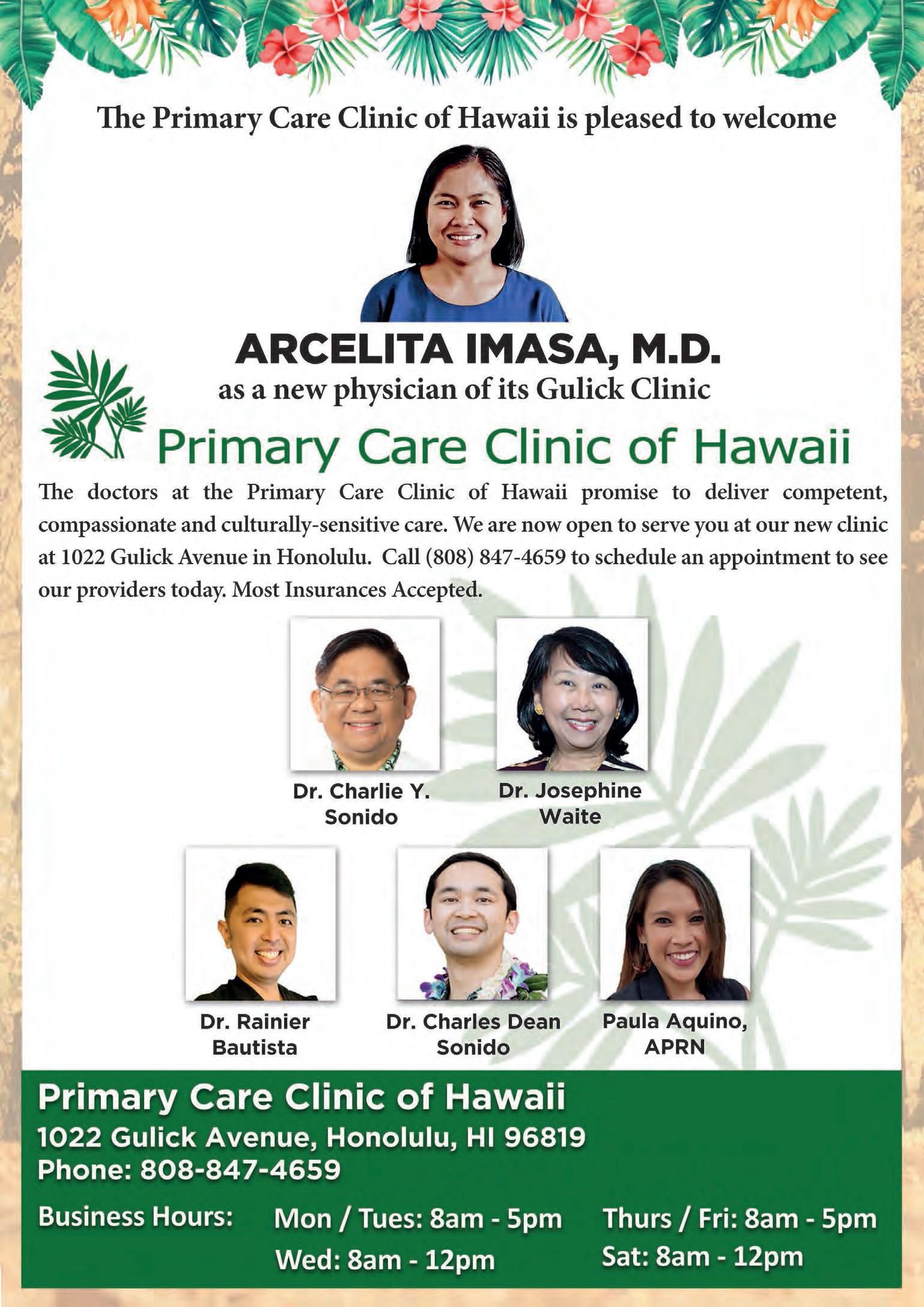
8 HAWAII FILIPINO CHRONICLE FEBRUARY 4, 2023
Accidents, Personal Injury and Law with Atty. George Alejandro
By Jim Bea Sampaga
As people would say, Hawaii is a paradise. But paradise isn’t accident-proof. In the first three months of 2021, there were 25 traffic-related fatalities. Aside from motor-related accidents, accidents can occur anytime and anywhere including at work, military, public places and even at home.
When it comes to personal injury and accidents, it is best to talk to a lawyer to get the best possible legal help. Personal injury lawyers are dedicated to upholding the individual’s right to proper and fair coverage and compensation.
“I advocate for people who have been injured in an accident at no fault of their own. Our firm represents people who are injured due to a motor vehicle accident, motorcycle/moped accident, pedestrian accident, or premises liability accident,” personal injury lawyer Atty. George Alejandro told Hawaii Filipino Chronicle.
Alejandro is a lawyer at Hawaii’s leading personal injury firm, Recovery Law Center. As the only Filipino lawyer at the firm, it’s important for him to represent and empower his Filipino clients.
“Most of the Filipino clients that I have encountered and/or represented are very respectful and timid. They appreciate and respect their lawyer’s analysis of their case and are amenable to their lawyer’s suggestions of how the case should proceed,” Alejandro said.
Personal injury cases are daunting and Alejandro said that Filipino clients would often request an interpreter at depositions or in arbitration proceedings.
“I guess it’s their “timidness” and respect for the legal process—they don’t want to
do no wrong. After all, going through the legal process can be a frightening experience,” he explained.
Accidents can happen in a blink of an eye. Its sudden nature will catch anyone off-guard. But doing certain things after an accident can greatly help you and your case says Alejandro as he lists tips to do when it comes to personal injury accidents.
Calling 911 is a must and having a police report generated is ideal. “You want to avoid a “he said-she said” scenario later,” said Alejandro. “You want to have an independent third party (police officer) memorialize the accident in a report.”
Moreover, Alejandro encourages getting the contact information of bystanders who witnessed the accident.
“So, that they can provide a statement of what they saw. Witness testimony can always strengthen an injury claim,” he explained.
Mobile phones are also handy when an accident happens as it will be easier to get pictures and videos of the accident scene. He said that documenting anything relevant such as visible injuries, vehicle damage, debris, license plates and registration labels will help strengthen your case.
“This is not an exhaustive list,” Alejandro said. “But these are helpful in assisting your personal injury lawyer better assess your claim.”
Working at a law firm is no easy task. It’s about making sure every aspect of the case is documented and verified. Clients must be informed. There are court hearings to prepare for. Alejandro said there is no ordinary workday at Recovery Law Center.
“Before I start my day, I generally go through my emails and tend to what is urgently needed. Whether it be responding to opposing attorneys or responding to
client inquiries. I prepare my clients for depositions and inform them of the process and what they can expect at a deposition. I also conduct depositions wherein in I question witnesses about their knowledge of the case. I attend court hearings and arbitrations, and constantly update my case files in preparation for trial,” he said.
“So, my day at the office is never boring. There is always a variety of work to be done.”
Born in Ilocos Norte, Philippines, Alejandro and his family moved to Hawaii in the ‘70s. He grew up in Oahu and admits he didn’t have any difficulty assimilating into Hawaii.
Before he became a lawyer, Alejandro wanted to become a doctor because of his family and relatives who are in the medical field. That quickly changed when he took a biology course in college.
“I remember how much I hated the subject… At that point, the idea of studying medicine was out of the question. So, I decided to change gears and study accounting,”
alizations as a Filipino lawyer in Hawaii, he told Hawaii Filipino Chronicle that Filipinos are truly community-oriented and value a close-knit community.

“They are helpful to one another in times of need. As I previously stated, Filipinos tend to be mild-timid in character. I realized that understanding their culture and my ability to speak llocano helps to break that barrier. Also, being a Filipino allows me to relate to the Filipino community on a personal and cultural level,” he shared.
From wanting to become a doctor to working in accounting and now, serving as a personal injury lawyer, Alejandro advises aspiring Filipino lawyers that studying law takes dedication.
he said. “I figured accounting was a respectable profession without further education beyond a bachelor’s degree.”
Alejandro worked in the accounting field for a while after receiving his bachelor’s degree. However, he admits he “didn’t find accounting fulfilling enough.”
“There was still something missing in my work life,” he said. “Since I didn’t become a doctor, I guess I will try law school. [And] that is how I ended up in law school.”
With professional experiences of being an accountant and lawyer, Alejandro shared that it prepared him immensely for his work at the Recovery Law Center.
“The field of accounting teaches you to be very detail-oriented. Being detail-oriented is very helpful in my work as a lawyer. When you look at the evidence and try to put the pieces together in a case, you want to make sure that you went through the facts/evidence with a fine-toothed comb making sure you didn’t miss anything along the way,” he shared.
When asked about his re-
“Don’t be a lawyer because your parents tell you to be. Going to law school takes dedication, a voluminous amount of reading case laws, and often time sleepless nights,” he said.
“However, if law is your ultimate dream, then follow it. Take undergraduate classes that teach you analytical skills (such as logic) and classes that require a great deal of oral presentations. As a lawyer, you will need to get used to public speaking. You will need to advocate and articulate your client’s position in front of an audience-whether in front of a judge, jury, or arbitrator. ln addition, taking undergraduate classes that require extensive writing will help hone your writing skills. Advocacy requires both written and oral communications.”
In addition, Alejandro emphasizes that the journey to becoming a lawyer will require “your desire, drive and stamina.”
“Keep that dream alive and don’t give up,” he said.
“Yes, law school is not an easy endeavor, but if you stick it out and stay on course, at the end of the journey you will say, l made it.”
FEBRUARY 4, 2023 HAWAII FILIPINO CHRONICLE 9 FEATURE
Atty. George Alejandro
By Elpidio R. Estioko
Diversity is important because it opens our world to different perspectives. Each culture, nationality and person has different knowledge and point of view. Our diversity opens opportunities for creativity and innovation.
AS I SEE IT
Diversity Drives Creativity, Innovation
National Asian American United (NAAU) President Joel Wong believes that diversity is really very important for us to consider and put into practice by building bridges through understanding Asian Culture and Heritage. This applies not only in the Bay Area or in Hawaii but all over the country.

His group launched a Civic Leadership Forum Silicon Valley featuring a 40-minute dialog between Asian American communities over Ding Ding TV (a Chinese American tech new media) with him as moderator. While the event is in the
Bay Area, Hawaii can likewise benefit from the forum. Maybe a diversity group in Hawaii can duplicate the program launched by NAAU.

The panelists were people of diverse backgrounds and diverse experiences. They are Kathy Watanabe, Council Member, City of Santa Clara, Santa Clara, California; Chris Norwood, President, Milpitas Unified School District Board; Francis Espiritu, President-Publisher, Philippine News Today and past president of the San Mateo County Filipino-American Chamber of Commerce; Rosa Kim Trustee, Fremont Union High School District; Naomi Nakano – Matsumoto, Executive Administrator at Office of Supervisor Otto Lee, Santa Clara County District 3; and Queenie Ngu.
It was held on Jan. 27 from 4:30 pm over Ding Ding TV Silicon Valley Studio located in Santa Clara, California. Dr. Xiaoyan Zhang delivered the keynote speech on “How social media divides us and how AAPI leaders leverage their cultural strengths to work together.”
There were multicultural artist performances such as Chinese music, Vietnamese dance and fashion show, Filipino singing, and Korean dance. To view the full forum, visit facebook.com/DingDingTV.
As I See It, diversity is of paramount importance for many reasons. First, we can learn about various cultures that will propel us to greatness. It teaches us to be innovative and creative.
Second, diversity gives us the chance to understand each other thereby promoting better communication and understanding leading to good relationship. It will make us complete and more diverse in our daily life.
Third, it will also give us an idea of how to approach problems that are unique to people by networking with them for a common goal. Since we understand the culture and their heritage, we would know how to make things relevant and encompassing. That’s how important diversity is!
According to the census, of Hawaii’s residents 38.6% were Asian, 24.7% Caucasian, 10% Pacific Islander, 8.9% Hispanic and roughly 1.6% African. One can attribute cultural diversity in Hawaii to its rich history of immigration.
The influence of Asian cultures on Hawaii dates back to the rise of the sugar industry when the Chinese immigrated to Hawaii to work on plantations beginning in the late 18th century. The first arrival of Chinese immigrants marked the beginning of cultural diversity in Hawaii. By the mid 1800’s, there were nearly 50,000 Chinese immigrants making Hawaii their home.
But instead of returning to China, these people continued to stay in Hawaii after their work contracts expired. They then excelled in small business ownership and lived in areas such as Chinatown in Honolulu and because the majority of Chinese immigrants were male, they often married into other ethnic groups, including native Hawaiians.
Next came the Japanese who immigrated to Hawaii to work on the plantations in the early 1800s. But from 1869 to 1885, Japan banned emigration to Hawaii because it did not want their citizens to become foreign laborers. However, when the country lifted the ban, Japanese began settling in large numbers in Hawaii. In 1920, over 40% of Hawaii’s residents were of Japanese ancestry.
Within the sugar industry, Filipinos were the largest ethnic group of all workers. Over 120,000 Filipinos immigrated to Hawaii between 1907 to 1931 mostly coming from Ilocos Norte. Today, there are still significant numbers of Filipinos immigrating to Hawaii from the Philippines, so, as a result, Filipinos have become the largest single ethnicity, representing 25% of Hawaii’s population.

Also, I found out that thousands of Koreans immigrated to the islands from 18961910. Many worked on the sugar plantations. From 1911 to 1924, the Korean workers requested picture brides and the resulting unions in Hawaii strengthened the Korean presence in the islands. Today, there are almost 300,000 claiming some degree of Hawaiian heritage. The ancient Hawaiians are immigrants too as their ancestors came from Polynesia, principally from the Marquesas and Tahiti. They made the arduous journey across the Pacific to the Hawaiian Islands beginning in the 3rd century. At the time when the first Westerners first explored the islands, there were between 250,000 to 800,000 Hawaiians.
Another one of the fastest-growing groups in Hawaii is Pacific Islanders. They mostly hail from Fiji, Guam, Tahiti and Samoa. Other than Hawaiians, Samoans are the largest group of Polynesians to have come to Hawaii. They grew steadily in numbers. So, by the 1970’s, there were over 13,000 Samoans, the majority of which lived on Oahu. Currently, 28,000 people of Samoan ancestry live in Hawaii.

Aside from Hawaiians, Asians and Pacific Islanders, Hawaii also welcomed big communities of Portuguese, American Protestant missionaries and Puerto Ricans due to the state’s plantation industry.
Diversity, I would say, made and is continuing to make Hawaii a progressive island state!
ELPIDIO
10 HAWAII FILIPINO CHRONICLE FEBRUARY 4, 2023
R. ESTIOKO was a veteran journalist in the Philippines and a multi-awarded journalist here in the US. For feedbacks, comments… please email the author at estiokoelpidio@gmail.com.
Hawaii’s Tax on Medical Services Harms Healthcare; It’s Time to Do Something About It!
By Keli‘i Akina
Hawaii has been suffering from a doctor shortage for years. Right now, experts estimate we have an unmet need of 776 fulltime equivalent physicians.
The greatest need is in primary care, but some specialties are shockingly underrepresented.
For example, we have only about a quarter of the number of pediatric pulmonologists that a population of our size is expected to have — which speaks to the issue of “suffering.”
Imagine being a parent of a sick child. It’s stressful, and your sole focus is getting medical care for your child.
To make matters worse, you live on a neighbor island and your child needs to see a pediatric pulmonologist, the
specialty with the greatest scarcity in the state.
You’re prepared to fly to Oahu for treatment, but you don’t know how long you might have to wait. You start to wonder whether you might need to go to the mainland to get your child that desperately needed medical care.
Under the circumstances, you might start to wonder why Hawaii doesn’t have enough doctors. Sure, the islands are remote, but we care about health. In fact, we had medical insurance mandates long before they were popular.
Plus, this is paradise. Medical professionals like to come to Hawaii for conferences; why don’t more of them stay to set up a practice?
There is no simple answer to these quesitons. Factors such as burnout and retirement play a role. But you cannot ignore the fact that
it’s hard for doctors to make a living in Hawaii, especially compared to what they can earn on the mainland.
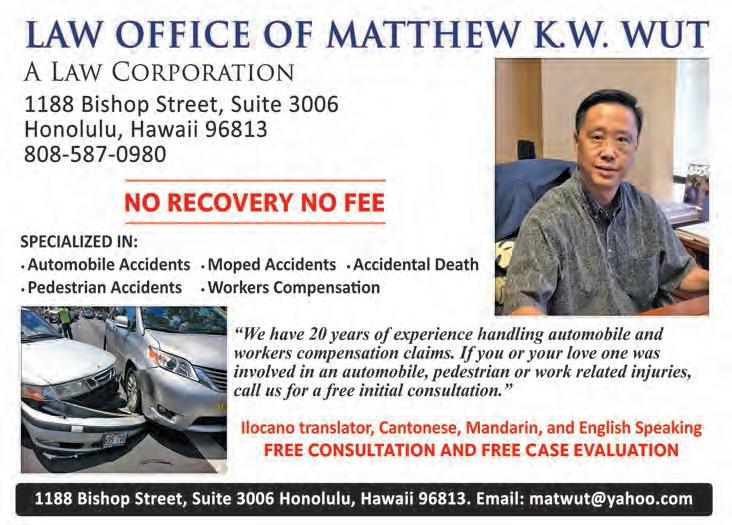
The obvious solution is to embrace policies that lower our cost of living. But we should also think about addressing the laws and regulations that directly affect doctors and to successfully operate private practices in Hawaii.
One place to start would be the state’s general excise tax. Did you know that Hawaii is one of only two states
that broadly taxes medical services?

Additionally, the GET adds significant overhead coss to every private medical practice in the state because it cannot be passed on to Medicare or TRICARE patients.
As local doctors have told Hawaii lawmakers, the GET can be the difference between a viable practice and one that is financially unsustainable.
During the election season, our new governor, Josh Green, repeatedly talked about eliminating the GET on food and medicine. While that would be a sound way to help reduce the cost of living in our state, the proposal should include a GET exemption for all medical care. Hospitals and nonprofits are actually already exempt from the GET, so extending that to all medical services would be a logical way to reduce the tax burden on both
Marissa Bañez’s Debut Book: Hope and Fortune
By Renelaine Bontol Pfister
Marissa Bañez’s children’s book titled Hope and Fortune, which came out on Feb. 2, is a message of positivity and empowerment.

The first-time author is a lawyer with nearly 40 years of experience as a litigator. She graduated from Princeton University in 1980 with a degree in Politics and a teaching certificate. She attended the University of California, Hastings College of Law in San Francisco, where she graduated in 1983.
Hope and Fortune is a rewrite of another story Marissa wrote years ago for her daughter Angelica’s 7th birthday party titled The Lost Foal
The stories she started writing were for Angelica and her friends when they were young.
Now, Angelica is a graduate school student at the City University of New York.
“The premise is the same (someone is lost and helped with life advice given by fairies), but The Lost Foal was one of my stories that did not expressly promote diversity and inclusion. I wrote and finished Hope and Fortune during a period of great racial, cultural, and political division in this coun-
try, with a raging pandemic that widened, instead of narrowing, those rifts,” Marissa explained.
“Like many people, I felt helpless and hopeless. I needed something in my life that not only gave me a reason to smile but also some sense that I could contribute to the betterment of society.”
Instead of a foal, Hope and Fortune feature a little girl named Esperanza who gets lost in the Fabled Fairy Forest. She encounters twelve fairies who give her life advice and guide her on the right path out of the forest.
The first fairy, the Fortune fairy of Hope, is striking to us Filipi-
nos as we immediately identify the traditional Filipino attire: her top features bell-like puff sleeves and her skirt is the black and red wrap of the native people from Baguio, where the author is from.
This fairy is inspired by Marissa’s late mother, who migrated to the U.S. with Marissa’s father with the hope of giving their children a better life.
Marissa and her other siblings
doctors and patients.
A GET exemption for medical services would not solve the doctor shortage. But it would help make it easier for private practice doctors to operate in our state and could also be the difference-maker for a doctor trying to decide whether to stay or pack up and leave for the mainland.
Reducing medical costs for patients is an important consideration as well. Is it right that the state benefits by earning tax revenue from people seeking medical care?
This year, Hawaii’s Legislature should help address the physician shortage by exempting medical services from the GET. It’s a simple and logical way to improve Hawaii’s healthcare system, both for doctors and patients.
migrated to the U.S. in 1968.
The twelve fairies are all diverse and unique. Marissa said: “I expressly curated the illustrations by making the characters multiracial, multicultural, multigender and multigenerational in different shapes and sizes.”
Each fairy has a spirit animal and every color and detail on every picture symbolizes something. Marissa collaborated closely with Enroc Illustrations for the drawings and was very much involved with the details.
(continue on page 14)
FEBRUARY 4, 2023 HAWAII FILIPINO CHRONICLE 11 OPEN FORUM NEWS FEATURE
KELI‘I AKINA is president and CEO of the Grassroot Institute of Hawaii.
ENDANGERED SPLENDOR: Manila’s Architectural Heritage 1571-1960
 By Rose Churma
By Rose Churma
In the book’s preface, the French architect, Guillaume Marchand calls this publication an urban novel. To read this book is likened to a journey, with its readers as explorers to decipher the urban zone that is Metro Manila.
In essence, this is an inventory of Manila’s architectural heritage, a vital instrument in preserving memory.
Apparently the process of doing a Cultural Inventory has become increasingly popular in the Philippines and the initiatives in Cebu and Bohol prov-
inces were noted as examples.
Ateneo de Manila’s Cultural Laboratory has also done cultural mapping of Tayabas in Quezon province, as well as Intramuros and San Juan in Metro Manila — funded by Fundacion Santiago, a non-profit foundation that “sees the positive contribution of heritage tourism to job creation at the grass roots level.”
It is not surprising that the impetus to create an inventory of Manila’s heritage structures was initiated by the country’s Department of Tourism in 1996—as part of a “master plan” that would generate better quality tourism.
Interestingly, a few Hawai’i architects and planners participated in producing this master plan—an off-shoot of Hawai’i State’s thrust to market Hawai’i’s consulting services in design and tourism planning.
Noted anthropologist and one of the authors of this book, Fernando N. Zialcita, was part of that team. He had identified the list of structures for each of the “Special Design Areas” identified in the master plan, and he eventually suggested that a more expanded “Inventory of Manila’s Heritage Structures” be conducted.
Cities and municipalities of the NCR (National Capital Region) was scanned, photo-documented and its architectural, historical and social significance noted, such that by the end of the survey, the total number of entries was around 3,400.
This book is a product of that research, with the team comprising of individuals with various skills and backgrounds and a project manager (Erik Akpedonu, a German Ghanian who developed a deep love for Philippine heritage and architecture) who trained the young researchers and controlled the quality output of the research.
But the common thread for all participants was their sincere interest in Philippine heritage architecture. This passion and commitment is evident in this publication—a stunning and awesome achievement in the context of Philippine society’s slow to non-existent appreciation of the country’s heritage, nor an understanding that cultural assets can be economic assets as well.
In this regard, Dr. Victor Venida, an economist and one of the authors, highlighted both the potential economic activities for each district that could serve as discussion points for long term urban management.
The book’s authors stressed that cultural heritage is more successfully preserved in the context of an urban plan, as experienced by several urban centers. It requires regular and consistent dialogue among its stakeholders.
The four districts of Ma-
nila that are covered are: Intramuros, Binondo, San Nicolas and Tondo. These four districts, a zone running from north to south at the mouth of the Pasig River is considered the core of Manila and of the entire Philippines.
Intramuros, located south of the Pasig River, began as the Spanish colonial walled city and evolved as the center of the nation’s political, religious, educational, social and cultural center during the Spanish rule.
North of the river is Tondo, which flourished as a port even during pre-hispanic times. While south of Tondo is Binondo, called the “Pivot of the Pacific” for its role in the Galleon Trade which earned Manila the term “first global city” since these global transactions took place in the Parian which was part of Binondo.
Beside Binondo is San Nicolas, whose historic structures document the emergence of a local bourgeoisie, among them the family of General Antonio Luna.
World War II devastated large swaths of Manila, destroying examples of architectural heritage from the Spanish colonial and early American era. But some remained. But for how long?
The authors of the book lament that the lack of district planning, the commercial sector’s desire for profit and neglect to maintain these historic edifices are destroying landmarks of Manila’s history and Filipinos’ creativity.
Since they started writing this book, a few of the structures have already been demolished!
In the back cover, they write: “This series was written in the hope that seeing all the remaining splendor gathered together under one cover, the public might feel it urgent to keep alive Manila’s story and its landmarks.”
This series is meant to be a set of three volumes. This book is the first volume.
“Volume 2: The South” covers the zone that extends from one of the oldest settle-
ments within the metropolis down to Manila Bay (which includes Pandacan, Paco, Malate, Singalong, San Andres to Ermita). “Volume 3: The North” will cover areas across the Pasig River—Sta Cruz, Quiapo, San Miguel, to Sampaloc-Sta Mesa.
We look forward to these volumes before some of its historic structures are demolished or deconstructed and moved elsewhere.
The photographs show the beauty and glory of the structures as well as the filth and decay (which is heartbreaking because beneath the grime and intrusive electrical wires and detritus of urban life, one can glimpse of what used to be— the intricate details of moldings, the craftsmanship of a bygone era).
One of the authors, Fernando “Butch” Nakpil Zialcita has Hawai’i ties. He received his graduate degree in cultural anthropology (MA and PhD) from the University of Hawai’i and is married to a local-born from O’ahu.

An author of other books, he has fought for the conservation of cultural heritage such as the protection of urban ensembles like Vigan. He currently is with the Ateneo de Manila University’s Department of Sociology and Anthropology where he set up the Cultural Studies Program.
For advocates of the preservation of Philippine culture and history, this book is a “must have.” For local libraries and educational institutions, this publication is a well-researched reference tool for young Filipino-Americans in search for their roots.
Interested parties can send inquiries via email at <kalamansibooks@gmail.com>.
ROSE CRUZ CHURMA established Kalamansi Books & Things three decades ago. It has evolved from a mail-order bookstore into an on-line advocacy with the intent of helping global Pinoys discover their heritage by promoting books of value from the Philippines and those written by Filipinos in the Diaspora. We can be reached at kalamansibooks@gmail.com.

12 HAWAII FILIPINO CHRONICLE FEBRUARY 4, 2023 BOOK REVIEW
PERSONAL REFLECTIONS
Protect The OFWs
By Seneca Moraleda-Puguan
With anticipation and excitement, Criza queued for her birth certificate to be apostilled at the DFA Aseana office in Pasay, Philippines.
She was there early in the morning, holding a list of all the requirements she needed to accomplish. Since the queue was a bit long, we had the chance to get to know each other.
While I needed my documents apostilled for our family to move to Europe, she needed hers so she can visit her mother who works as a domestic helper for almost twenty years in Jeddah, Saudi Arabia.
Criza eventually wants to stay there and be like her mother, hoping for a better life compared to the one she leads in the Philippines now.
At the age of 24, she works as a sales lady at a local mall in Rizal province, just outside Manila. She said that her salary is only 9,000 pesos, roughly $165, a month.
She said even if she wants to build a family in the Philippines, it wouldn’t be enough. With a nod, I agreed. Before we said goodbye to each other, we became friends on Facebook and I prayed for her.
Criza is just one of the thousands of Filipinos who wish for better lives, thinking that working overseas would be the solution. Many of them are professionals in the Philippines but would gladly work as factory workers and domestic helpers abroad because of better and higher pay.
I met many of them not minding the long queue at the DFA because they knew that their efforts will pay off. They may not know the challenges or dangers that await them but the motivation to provide for their families surely outweigh the uncertainties that lie ahead.
In fact, my own mother is one of them. She was a SPED teacher in Baguio City, but the low salary pushed her to pursue being a nanny in the United States twenty years ago. Already a senior citizen, she still takes care of babies the same age as her grandchildren.
When the news of the murder of 35-year-old OFW Jullebee Ranara broke out, I instantly remembered Criza.

Ranara was one of the more than 200,000 Filipinos working as a domestic helper in Kuwait. Her charred body was found in the desert.
According to speculations, the teenage son of her employer raped, impregnated,
HAWAII-FILIPINO NEWS
FilCom Invites Sponsors, Booths for the Upcoming 2023 Filipino Fiesta
The festive Filipino Fiesta at the Filipino Community Center (FilCom) is gearing up for its Flores de Mayo celebration on May 6.
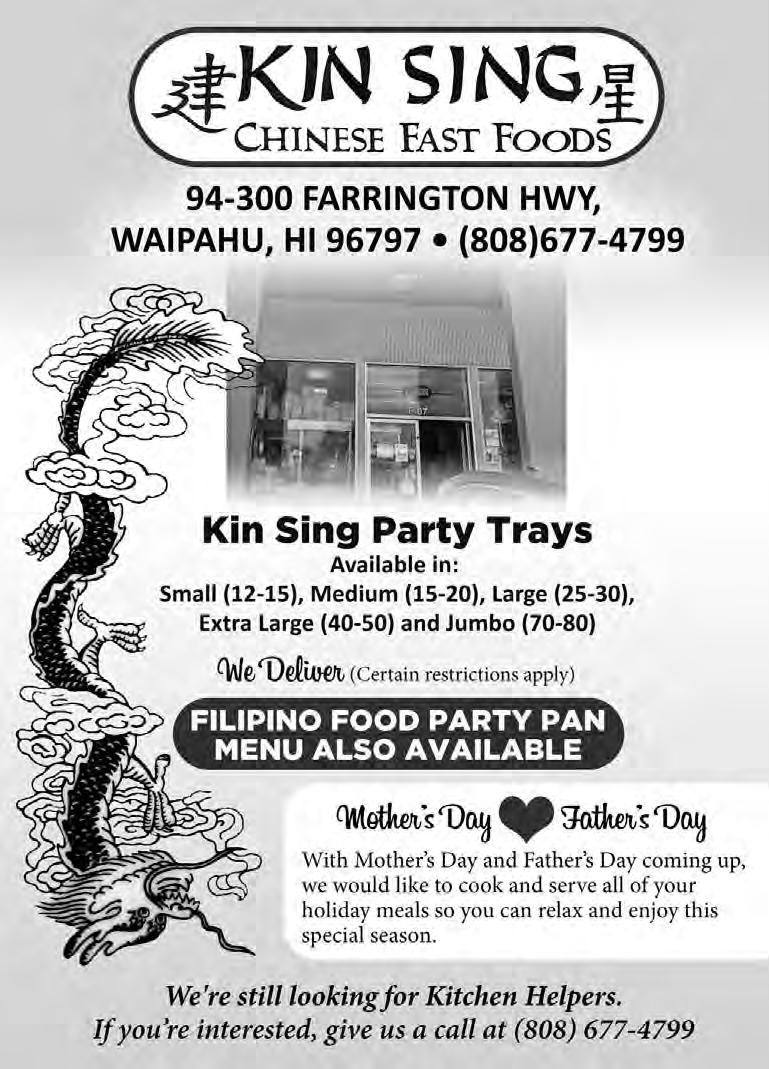
FilCom hopes to promote and perpetuate Filipino culture during this festive gathering that will feature Filipino entertainment, food and many more.
ran over and burned her body. She left behind her husband and four children.
It was really a heartbreaking and shocking news. But this is not the first time this happened to a Filipina helper in the said country.
According to news reports, there are already several cases where domestic helpers from the Philippines died at the hands of their Kuwaiti employers. But despite the threats, many aspirants are not deterred to pursue work overseas and still choose to brave abusive employers just so they can provide for their loved ones.
What future awaits Criza? This I can’t help but ponder.
I hope she gets blessed with a kind and generous employer. I pray that her pursuit would lead to her being able to build and provide for
her family.
I wish that she won’t have the same fate as Ranara and many others who were unfortunate to receive harsh treatment from their bosses, some even facing death.
Overseas Filipino Workers (OFWs) are considered modern-day heroes because of their big contribution to the economy of the country.

But what is the use of such an accolade if it costs them their lives? Is there a way to protect them? Is the Philippine government proactive enough to prevent tragedies such as the Ranara murder?
The government has set in place agencies such as the Philippine Overseas Labor Office (POLO) under the Overseas Workers Welfare Administration (OWWA) and the Department of Labor and Employment (DOLE) that provide support and ensure the rights and working conditions of OFWs all over the world.
But these agencies can only do so much to protect the millions of Filipino work-
ers all over the world. They are doing the best they can, but it takes a concerted effort from all of us as a nation to send help and support to our modern-day heroes.
Filipino communities all over the world are called to look out for the welfare of each other.
I believe that this tragedy may have shocked the Filipino community in the Middle East and the rest of the world but will not hinder many of our countrymen to leave the country and pursue greener pastures elsewhere.
We can only hope that there will be no more Filipino who will experience Ranara’s fate. Our heroes, like Criza and Jullebee, and their families deserve much better. Let us all work together to protect them.
In case you are a Filipino working overseas reading this and experiencing harsh treatment from your employer, please don’t hesitate to reach out. Always remember that you are not alone. Help is available.
FilCom is inviting the community to become a sponsor for the event. Moreover, booths are also available to purchase for small businesses to promote and sell their merchandise.
Those interested to join the event as a sponsor, food and business booth, please fill out the package form that can be found on FilCom.org/2023-filipino. Submit the form on or before April 6, 2023.
For more information, visit FilCom.org.
FEBRUARY 4, 2023 HAWAII FILIPINO CHRONICLE 13
Ibilangko Daytoy Special Issue: Petpetpetak: Pingki
Ken Salugsog; Allangogan
Deppa
ILOKO By Amado I. Yoro
ayaw-awanak san Angkuan, “ nakunak iti bagik itay awan man la a pulos ti pagilasinak no sadino a sarpaw ti pagtitiponan dagiti kakaduak a kameng iti GUMIL Oahu. Domingo ita. Enero 29, 2023.
“Umaykanto idiay Neal Blaisdell Park, Manong, ti pagmitingan intono Domingo” kinuna ni Emelyn Damo, ti sekretaria idi inawagannak idi rabii ti Huebes.
“Wen”, kinunak. Awan ti saan no isuda ti agawag la ketdi ta napia ti bagi. “Ania kadi ti oras?” pinennekko.
“Pangaldaw nagbaetan iti alas dies, sa agtuloy iti malmalem ta adda miting.”
“Ania kadi ti napateg a damag?” sinaludsodko. Amangan kunak iti bagik nga adda napintas a follow-up dagiti immunan a nagsasaritaan ti hunta idi Agosto 2022, ti maika-26 nga anibersario, kas iti pannakaangay ti international conference, ti panagpabuya ti drama kas pamastrekan iti pondo, ti pannakabiag ti Tangguyob magasin, iti pannakaisubli a maangay ti Literary Forum ken Workshop, ken ti pannakaisagana a mailibro ti
napateg a pakasaritaan ti GUMIL Oahu.
“Denggentayto ti ipadamag ni Apo Presidente” insungbatna.
Maysa ni Emelyn a kagagetan nga opisial ti GO. Dayawek ta saannak a malabsan no adda nasken a taripnong. No saan a ni Ric Agnes, co-organizer ken isu ti namber wan nga adbayser ti GO, maawaganak latta.
Ngem, ne, ditoy parke a kuna ni Emelyn, awan met ti makitak a kaduak. Saanak met pay unay a naladaw ta 10:45 pay met ti oras.
Agar-arbis, ngem sinursorko dagiti tolda ken gazebo iti parke, naay, kaaduanna met dagiti adu ti karkaratay ken karkarison, daldlayday ken kupinkupin, bitibitin --------adda dagiti agguuldag, -dagiti agtutugaw kitana agdudungsa -----dagiti kakabsat a makuna a awanan taeng., siguro a saanda a napnek a naturog a nagpatnag.
[Agyamanka Angkuan, adda pay la nasimsimpa a pagiddaam ken pagyanam a mangan ken maturog]
“Ania ti maaramidan ti turay kadagitoy a kakabsat?” adda saludsodko iti bagik. Maysaak a volunteer organizer coordinator iti Special Projects pakairamanan iti Adopt a Hwy Clean Up, Feed the Homeless ken Adopt a Park.
MALAGIPKO ITA, daytoy a parke ti sentro ti aktibidad dagiti kaaduan a gunglo ti
Ti Barukong Ni Angkuan
kadaraan------malagipko ita, namin-adu metten a nagtitinnulongan a dinaldalusan dagiti sumagmamano a grupo Filipino, pakairamanan dagiti kandidata iti Miss Oahu Filipina, Mrs. Hawaii Filipina, uggorenda ida ni Mrs. Hawaii Filipina Armi Farinas, maysa pay a kaaktibuan a padami a volunteers..

Malagipko, ti simbaan a yanko iti St. Paul’s Church nga idauluan ni Apo Randy Albano, tubo ti Bacarra, daytoy a project ket awaganmi iti ADOPT
A PARK, ti Filipino Organization, dagiti nagtitipon a gunglo Filipino, pinadasmin a dinaldalusan idi, ngem no namin-ano a sinurnadak ti aplikasionko/mi tapno subliananmi koma a dalusan. Awan metten ti banag ti aplikasionko.
Sabali ita ti rupa daytoy a parke. Ngem ala, Bareng no maysa manen a mairaman kadagiti parke a kitaen ti gobierno ti siudad iti nasaysayaat koma a pannakamantenir daytoy.
Sangkasao dagiti agtuturay iti estado ken siudad: kissayan ti parikut ti homeless. Ala man ngarud ta kitaek man, aramidyo ti pakakitaan. Saan la koma a kari sakbay ti eleksion.
ITI PANANGPASIARKO
Marissa’s alma mater, Princeton University’s shield logo is featured in the Fortune Fairy of Wisdom and Intelligence’s clothing.
Meanwhile, The Fortune Fairy of Beauty is not in human form, highlighting the fact that beauty is fluid and all-encompassing.
There are familiar images reimagined by the author such as the Statue of Liberty/Lady Justice hybrid, Botticelli’s Birth of Venus and Rosie the Riveter, which inspire certain concepts in the reader.
Writing is just another facet of Marissa’s creativity. When Angelica was young, Marissa used items from the dollar store to create puppets and crafts for her.
Surrounded by accomplished siblings, Marissa wanted to keep up with them so she taught herself to sew, play a little guitar, compete in speech/ oratory contests, and cook.
ITI PARKE, mayat met ta maysa a panagpagnakon.
Naulitko: nayaw-awankan san Angkuan.
Nalagipko ketdi nga awagan ni Emelyn. “Yanmon Manong?”dinamagna.
“Addaak ditoy parke, awankayo met?”
“Umayka ditoy Kambingan, umaykan”
“Agtudtudo ngamin, isu a ditoytayo.”
“Ayyos, aysus umayakon”
ITI DALANKO A MANGSUBLI TI PARKING TI LUGANKO, ne, adu pay ti ummong dagiti kalapati.
Adda ubing a bambatayan ti amana siguro, makiay-ayayam ti ubing kadagiti kalapati a kurkurwayanna iti makan.
ITI SIROK ITI AKASIA, wenno algarroba, Ne, daytan, ay, naay, adda met tumartarektek a kalapati iti padana a kalapati. Pagammuan simmalpa. Ne, libre pabuya !
DITOY KAMBINGAN, AWAGAK: BALIK SA DATING PUGAD, ditoy ti nakabuangayan ti GUMIL Oahu idi Agosto 13, 1996. Dita bangir a dining room------31 a co-organizers ti nagtitipon dita ta sinangailida da Appo Dionisio Bulong ken Reynaldo Duque,
She parked her stories as she raised her daughter and focused on her legal career. When the pandemic erupted and she found herself bored and watching a lot of Netflix, she dug out her stories, polished them, and sent them off to publishers.
Marissa says, “There’s nothing sacrosanct about being a lawyer and there’s nothing in lawyering that’s inherently inconsistent with writing a children’s book. Indeed, my favorite thing about lawyering is the writing. And it’s a way for this almost 65-year-old Boomer to enjoy speaking to and connecting with young children.”
Marissa had a heartwarming experience when she held a reading of her book at a New York City library in December. A 7-year-old Asian boy expressed how much he loved the book and that he hoped to write a book someday too.
Marissa is currently Of
agpada nga Editor, Bannawag ken ni Apo Bulong, Liwayway ken ni Apo Duque.
SIAK SAN TI NAUDI. “Komustakayo, Appo ken kakabsat”, impasungadko.
Adda nagkuna: kaska la talaga a senior citizen, dumadaan, lumaglagto.
Kasta ti awan kasarsaritana, kasta ti agpagna iti inaldaw.
Intudo ni Emelyn ti attendance notebook, siak ti kaudian ti listaan.
NAGTUGAWAK ITI UNGTO TI LAMISAAN. Kinaabayko ni Eddie Villegas a kailiak, i-Sinait. Taga Sallacapo idinto a Tapaoak.
[Adu ti pukpuklo idiay ilimi a Sinait, maawagan pay iti Garlic Center of the North. Sinnait. Laban-laban.}
Pinasiar dagiti managsiput ken managpaliiw a matak,[ in the eyes of a mannurot;] kaaduan ti am-ammok, nupay adda 3 wenno 5 a kasla barbaro a rupa.
Iti kanawanko, adda tallo nga Eddie. ni Eddie Villegas,[Sinait- Yor] ni Eddie Agpalza [Vintaren- Siwawwer], ni Eddie Bueno, [San Nicolas-Banga—aglako ti daga awan titulona] Ric Agnes [Sarrat-Ritritemon Kayong] ni Rizal
(continue on page 15)
Counsel in the New York office of the international law firm of Greenberg Traurig, LLP.
However, Marissa said: “Nothing in the law will give me the same euphoric feeling because it’s real and it’s personal. With any successes that I had in my legal career, it was always on behalf of someone else – the client, my firm, another organization, etc.”
“Despite my age, I feel I still have a little bit more fuel in the tank, and I want to keep going… just in a different direction,” she added.
Marissa is just beginning. “I already have several stories essentially completed and simply waiting for publication.”
Black Rose Writing is Marissa’s publisher, and the book is also available for purchase on Amazon, Barnes & Noble, and Barong Warehouse at https:// barongwarehouse.com/products/vmbb1-hope-and-fortunebook-by-marissa-banez.
14 HAWAII FILIPINO CHRONICLE FEBRUARY 4, 2023 PHILIPPINE LANGUAGE
(NEWS FEATURE: Marissa....from page 11)
“N
LET’S ZUMBA | Filipino Community Center | Every Monday starting January 9, 2023 at 6:15pm | FilCom Center, Consuelo Courtyard, 94-428 Mokuola Street, Waipahu | Need to unwind in movement and dance after a long workday? Join the community as we Zumba through the evening. Only $5 per class. Proceeds go to support these program-types for FilCom Center.
COVID-19 & FLU FREE VACCINATION | Filcom Cares | Feb. 16, Mar. 16, Apr. 20, May 18 and Jun 15 from 10am to 12pm | Filipino Community Center, 94-428 Mokuola St., Waipahu | FilCom Cares is inviting the community to get jabbed in the upcoming free vaccination drive. Flu vaccines and COVID-19 shots are available for free to the community. Just bring your photo ID, medical insurance card (if any), and your vaccination card. For more information, call FilCom Cares at 808369-5380.
(PHILIPPINE LANGUAGE: Ibilangko....from page 14)
Fernandez, [Badoc-Luna town] Mila Fernandez, Emelyn Damo, Gladys Menor.
Baro a rupa-baro a kameng Mori sen Antonio Tagama, Virgie Farinas, Divina Menor, Nena Bueno, Myrna Villegas, Fely Fayloga, Melinda Gambol, Lina Domingo,Marylou Solamillos, siak.
Ne, simrek ni Marivic Dumlao.
Narugian ti miting. Panglukat a kararag ni Melinda Gambol, English, ken Gladys Menor, Ilokano.
YAM-AMMONA BAGBAGINA: Pasubli a rikus, clockwise ken nairugi ken ni Marylou Solamillos.
Nagrikus ti self-introduction---- -nadakamat dagiti balikas a daan, kadaanan, tagingting ken antigo, nailet ken nalawwa, atiddog kken ababa, adda pay nagkuna, balo-akon, [baroak manen] adda pay nagkuna, agkabaw a kabalio ngem napigsa ti kugtar ti kamaudi----
ITI DAGUPMI ITA NGA ALDAW---Adda tallo nga adigi [co-founder] ti GUMIL Oahu dakami kada Ric Agnes ken Gladys Menor ti naaddaan ti gundaway nga adda ita a miting, kadagiti 31 nga orihinal a co-organizers.
Napnuan ti imas ti kaan iti pangaldaw kadagiti naorder a makan ditoy Kambingan, basta Kambingan, naimas. Pinapaitan, sangkutsar, pancit, dinardaraan, naimas a dinengdeng a karabasa, utong, okra a nasagpawan iti pasayan---
Immatiddog ti tabas ti turon, idinto a nagtimbukel met ti katsaron. Kuna ni Lina D: alaem ti dua a sangaparis a katsuron, mangala ti maysa a turon. Dayta ti naal-alam, Angkuan.
PASET TI AGENDA, pannakainominar ken mabotosan dagiti agtakem kadagiti puesto a nabakantean; panagpabuya ti drama; maangay a GUMIL International Conference ken sadino ti venue, ken panangawis kadagiti sigud, ken kabarbaro a kameng.
Napagtutulagan pay ti pannakaangay iti binulan a miting, potluck iti tunggal alas singko iti malem, maikatlo a Domingo.
NAIKKANKAMI TI GUNDAWAY A NAMAGSAPATA kadagiti dua nga opisiales, da Marylou Solamillos, external vice president; Gladys Menor recording secretary.
Ken dagiti tallo a baro a kameng: Melinda Gambol, Mori-sen Antonio Tagama ken Fely Fayloga.
“The power and authority vested upon me [ as a founding president/director], you are now officially and duly officers and members of GUMIL Oahu. Welcome ! Congratulations !
KASTOY TI INSINGAYMI A KAPAMPANUNOTAN ken singasing iti pannakaitultuloy latta ti
CALENDAR OF EVENTS
AARP TECHNOLOGY TIPS | AARP
Hawaii, Senior Planet Organization | Every Friday from February 10 to March 10, 12-1pm | Online classes | Kupuna can learn more about technology such as Smart TVs, smart watches, virtual payments and even Spotify in this free webinars. To register, visit events.aarp. org/HITech.
THE 98TH ANNUAL HOOLAULEA 2023 | KSK Association of Teachers and Parents, Kamehameha Schools | February 25, 2023 at 8:30am-4pm | Kamehameha Schools, Kapalama, 210 Konia Circle | Enjoy authentic local food, music, games, and much more at this fundraiser event to support teacher and student grants, college scholarships and ohana events.
THE 27TH ANNUAL HONOLULU FESTIVAL | The Honolulu Festival Foundation | March 10-12, 2023 | Hawaii
panagsurat. Napateg ti bukod a pagsasao. No saan a panagsurat, ti nasken unay iti panagkakadua, iti panangited ti panawen, ti talento, ken karaman ti kuarta kas paset ti responsibilidad ti maysa a napudno, napasnek a kameng----panagkakadua a panagdur-as ken panagrang-ay ti Literatura ken Kultura Ilokana, kas tema wenno motto ti GUMIL Oahu.
NONABUNGA man ti napalpalabas a liderato a simmaruno kaniak, da Gladys Menor, Rafael Alimbuyugen, Rizal Fernandez, ken Silvino JUN Bermisa, ken ni agdama a presidente Eddie Bueno, gapu iti nasimbeng a panagtutunnos ken panagtitinnulong, agyaman ken agsaludoak ket iti koma panagtitipon ti adu a barbaro a kapanunotan ken iti saan a pananglipat iti bassit a nangrugian, kas iti pannakaiula ti bukel, nagtubo, nagbiag ken sisbibiag, nabungbunga koma pay, kas nadakamatko iti in my presidential exit as an outgoing president idi Nobiembre 2001:
“ hoping that following administration is to continue, maintain and improve, bring new ideas, new programs OR TO EXCEL …….what we all started in collective and collaborative efforts…. I trust that GO is in good hands.”
Nadakamatmi a maysa iti TOP 5 ti GUMIL Oahu, maikadua, ta umuna kaniak ti Annak Ti Sinait ken Alumni, a kaaktibuan kadagiti aganay a 18 a guuglo iti Hawaii a nakairamramananmi a nangbangon, nakipagbangon, no proyekto, ditoy ken idiay Filipinas iti pagsasaritaan.
Indalanmi ti pangrikep a panagyaman babaen iti kararag.
SALUDO KADAKUADA A SANGAPADA
Original co-organizers ti GUMIL Oahu
Convention Center, Kalakaua Avenue | The three-day event will highlight cultures from Hawaii and the Asia-Pacific region such as the Philippines, Japan, South Korea, Australia, Tahiti and many more. Admission to the events is free. For the full event schedule, visit honolulufestival.com.
HOUSEHOLD HELP WANTED
Starting salary from $2,000 per month with annual salary increases
• Need domestic help who knows how to do household chores such as cleaning, cooking, laundering clothes and other household services.
• Prior experience preferred.
Attractive salary package awaits you!
BABYSITTER OPENING
Babysitter is needed to care for a 1-year old baby and do other activities related to babysitting. Experience preferred. Please include in your resume your references. Competitive salary and other benefits await you.
Send resume to: filipinochronicle@gmail.com
18. Letty Pascua 25. Elvie Tagayuna
19. Fred Quibol 26. Estrella Taong
20. Vic Rayo 27. Paul Taong
21. Evelyn Rojo 28. Mike Ulibas+
22. Gerry Rojo 29. Helen Ulibas
23. Rina Sagayadoro 30. Amado Yoro
24. Tony Sagayadoro+ 31. Elias Yoro+
UMUNA A CONSTITUTION & BYLAWS INTRABAHO DA
1. Ric Agnes, pangulo
2. Amado Yoro, kameng
3. Mike Ulibas, kameng
4. Gladys Menor, kameng
Ket ni Ric Agnes ti kangrunaan a nangserrek iti panagkameng ti GO iti GUMIL Filipinas, ni Amado Yoro ti nangirehistro iti Internal Revenue Services, Department of Treasury ken iti Department of Commerce and Consumer Affairs [DCCA], State of Hawaii Regulatory Agency.
UMUNA LITERARY FORUM/WORKSHOP
Agosto 19, 1996
Manager’s Mansion Renton Road
Ewa Villages
Umuna a Literary Forum Seminar/Workshop Chairman ni Francisco Ponce. Kangrunaan a sangaili ken nagsarita da Dionisio Bulong ken Reynaldo Duque iti Bannawag ken Liwayway.
Babaen iti adu a seminar ken forum, ken iti anep ken regta dagiti dadduma a kameng, nakapagsuratda, ken naaddaanda iti gundaway a nakagun-od iti napateg a pammadayaw iti tay-ak ken salip iti panagsuratan.
FEBRUARY 4, 2023 HAWAII FILIPINO CHRONICLE 15
1. Felipe Abinsay, Jr.
2. Ric Agnes
3. Romualdo Agustin
4. Namnama Baptista
5. Carayo Caoile
6. David Cordero
7. Philip Blanco
8. Maggie Domingo
9. Larry Fiesta
10. Jerry Ilar
11. Mona Ilar
12. Joe Lazo
13. Arsenio Macadangdang
14. Marlene Manzano+
15. Ben Mendoza
16. Gladys Mendoza
17. Gladys Menor


FEBRUARY 4, 2023



























 By Rose Churma
By Rose Churma






